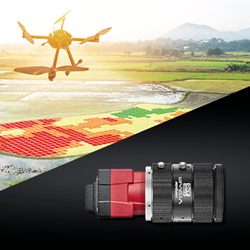How can I improve the survival rate of fruit tree planting?
Indeed, there are tricks to planting fruit trees. By following scientific planting methods for fruit trees, it's possible to increase their survival rate and boost profits for fruit growers.
Root System Maintenance: After digging fruit trees from the nursery, the root system might have suffered damage. To minimize the damage, you should trim the root system. Use scissors to remove some of the main roots, trim larger lateral roots flat from the injury site (avoiding slanted cuts as they heal more easily).
Pruning Leaves and Branches: Since the root system is disrupted, it cannot absorb enough water from the soil to support the transpiration of leaves and branches. Prune away 2/3 of the leaves to reduce transpiration and improve the survival rate.
Timely Planting: Spring planting should occur between the thawing of the soil and the budding of the seedlings. Planting too early or too late is detrimental to seedling survival. Different tree species have varying optimal planting times, with early planting suitable for peaches, apricots, plums, and late planting for jujubes. Generally, immediate planting after soil thawing is recommended.
Use High-Quality Seedlings: The quality of seedlings significantly affects planting survival rates. Choose seedlings that adhere to technical standards, such as those without diseases or pests, strong growth, developed root systems, and short internodes. Carefully select seedlings, remove weak or elongated ones, and prepare the seedlings before planting.
Planting Techniques:
a. Apply Base Fertilizer: In the planting hole, apply 1 kg of Lilei seaweed fertilizer, 2 kg of Aoli microbial fertilizer, and 0.2 kg of Aoli bio-organic microbial agent per hole, mixed with soil before planting.
b. Root Soaking in Nutrient Solution: Soak the root system in a nutrient solution containing 15 ml of Rongwang, 25 ml of Jike Shan, and 10 liters of water for 30 minutes. This promotes wound healing, accelerates root growth recovery, and enhances survival rates.
c. Remove Grafting Film: Grafting film should be removed to prevent uneven growth at the graft union, especially for citrus trees. For species like bayberry, plum, peach, and chestnut, grafting unions should remain covered for proper growth.
d. Spread Root System: Place the seedling in the planting hole, spread the roots, and ensure normal root growth.
e. Watering: After placing the seedling in the hole, cover with a thin layer of soil, water thoroughly to ensure root-soil contact, and then add another layer of soil.
Mulching with Plastic Film: After planting, create a shallow basin around the seedling and cover the surrounding area with an 80-100 cm square plastic film. This helps increase soil temperature, conserve moisture, and encourage early and vigorous shoot growth.
Fertilization and Water Management: Watering with fertilizers on the 10th and 20th days after planting is crucial for root system recovery. Use specific fertilizers based on the days since planting and the composition mentioned in the text.
Pruning the Apex: Trim the apex at the designated height by cutting above 35 full buds. Smooth, non-split cuts are required, followed by sealing with a wound dressing or plastic wrap to prevent water loss.
Post-Planting Management: Follow the principle of "promote growth initially, then control." Adjust irrigation and fertilization based on tree growth and soil moisture. Attend to disease and pest prevention during the seedling stage. Strive to create an optimal environment for seedling growth.
Featured Product

Innovative SWIR camera for UAV based spectral remote sensing
Allied Vision's compact and light weight Alvium SWIR (short wave infrared) cameras are the ideal choice to build cost-effective OEM systems used in embedded and machine vision applications. The cameras support a spectral range from 400 nm to 1700 nm at high quantum efficiencies. This allows to capture images in both the visible and SWIR spectra with a single camera and enables users to reduce overall system costs! Equipped with Sony's IMX990 and IMX991 SenSWIR InGaAs sensors, Alvium SWIR cameras deliver high image quality and frame rates. This makes them well suited for drones or handheld devices used in various industries such as, agriculture, mining, solar cell inspection or medical.

